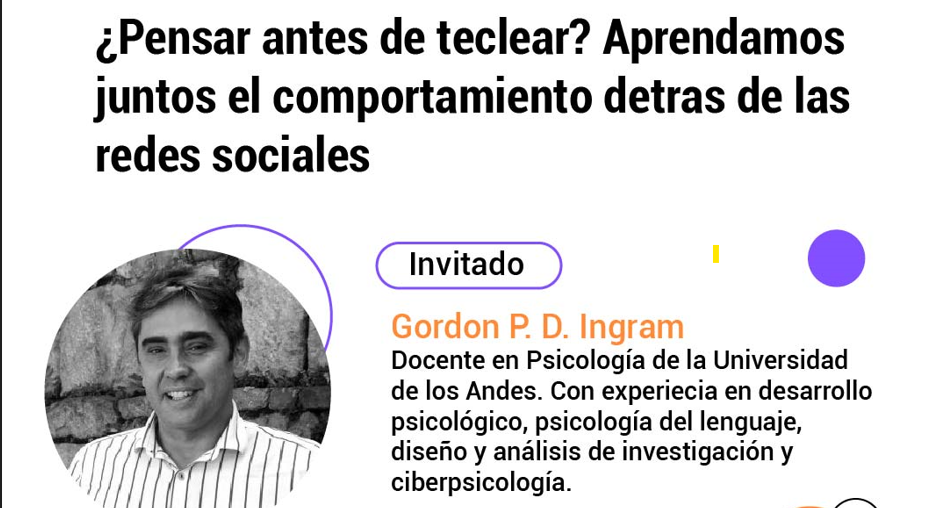Professor Gordon Ingram is a cyber psychologist at the University of the Andes and his main area of research has been influenced by his curiosity in investigating the behaviors of the young population in digital environments.
Professor Ingram highlights moral panic as one of the relevant aspects of the use of the Internet and social networks. This refers to the use of a new technology mostly by young people, compared to the use given by older adults, so that the latter do not understand the changes in relationships and the new dynamics promoted by its use so that they generate fears because they do not know or do not understand its scope. There are risks in the use of the Internet and new technologies, but moral panics are based more on a low rational thought and exaggerated discourse of the negative effects they will have on society.
Ingram stressed the importance for organizations, parents, and individuals to understand the changes in identity, as well as the new ways in which people communicate. An example of this is that communication using words themselves to convey emotions has fallen short; using emojis, stickers, or memes is the new way people reflect more effectively their feelings.
Another change in social identity associated with interaction on social networks is that people begin to reflect more on their appearance and the way others see them, stimulated mostly by the high graphic content of these. New forms of communication prioritize audiovisual content, which can also be leveraged to add value to current communication and reach new generations that interact at all times through digital platforms.
There are also new ways to connect intercultural groups or communities that enrich the experience and generate spaces to exchange knowledge. However, this also generates some psychological consequences such as the excessive use of digital tools, resulting in the implementation of time in non-productive activities, as well as the generation of concerns or even becoming dependent on it. Professor Gordon emphasizes that one of the biggest common concerns is not the excessive use, but the improper or unfruitful use of the time spent on the Internet because it could be used for long periods without major risks as long as the time is being used for productive activities.
Another consequence that is generated with the use of digital platforms is disinformation that appears mysteriously but has the power to spread massively from anywhere in the world. Some consequences of this are also the creation of polarization and echo chambers where people are only found in conversations or communities of shared ideas or thoughts. This, with the help of social networks, increases their influence. An example of this is that on Twitter messages are massively reproduced regardless of or without discussing the veracity of the shared content.
These echo chambers expand the possibility of conspiracy theories being created by massifying disinformation and fostering a high-volume movement without productively discussing opposing arguments, allowing biases, and creating negative narratives.
In conclusion, it is important that organizations and other actors understand the role that digital platforms and social networks play in influencing or defining the behavior of a group of people, especially young people, and how to generate opportunities to approach them.
👉🏽 If you want to watch the full video and relive the memories of the event, you can find it in Spanish here:
To boost your digital resiliency, sign up for our free online course on Countering Disinformation (available in 8 languages, including English or Spanish):

